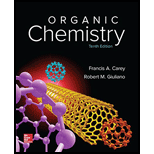
Concept explainers
Describe the appearance of the
NMR spectrum of each of the following compounds. How many signals would you expect to find, and into how many peaks will each signal be split?
Want to see the full answer?
Check out a sample textbook solution
Chapter 14 Solutions
Organic Chemistry - Standalone book
- How many peaks will show up in the H NMR spectrum of the given compound below. Choose one: A. 9 B. 6 C. 5 D. 11arrow_forwardHow many signals would you expect to see in the 1H NMR spectrum of each of the five compounds with molecular formula C6H14?arrow_forwardDescribe the 1H NMR spectrum you would expect for each of the following compounds, indicating the relative positions of the signals:arrow_forward
- Identify the carbon atoms that give rise to the signals in the 13C NMR spectrum of each compound.a. CH3CH2CH2CH2OH; 13C NMR: 14, 19, 35, and 62 ppmb. (CH3)2CHCHO; 13C NMR: 16, 41, and 205 ppmc. CH2 = CHCH(OH)CH3; 13C NMR: 23, 69, 113, and 143 ppmarrow_forwardIdentify the carbon atoms that give rise to the signals in the 13C NMR spectrum of each compound. a.CH3CH2CH2CH2OH; 13C NMR: 14, 19, 35, and 62 ppm b.(CH3)2CHCHO; 13C NMR: 16, 41, and 205 ppm c.CH2=CHCH(OH)CH3; 13C NMR: 23, 69, 113, and 143 ppmarrow_forwardThe 1H and 13C NMR spectra of compound A, C8H9Br, are shown. Propose a structure for A, and assign peaks in the spectra to your structure.arrow_forward
- Following are two constitutional isomers with the molecular formula C4H8O2. (a) Predict the number of signals in the 1H-NMR spectrum of each isomer. (b) Predict the ratio of areas of the signals in each spectrum. (c) Show how you can distinguish between these isomers on the basis of chemical shift.arrow_forward1Compound 1 has molecular formula C7H16. It shows three signals in the 1H-NMR spectrum, one at 0.85 ppm, one at 1.02 ppm, and one at 1.62 ppm. The relative integrals of these three signals are 6, 1, and 1, respectively. Compound 2 has molecular formula C7H14. It shows three signals in the 1H-NMR spectrum, one at 0.98 ppm, one at 1.36 ppm, and one at 1.55 ppm. The relative integrals of these three signals are 3, 2, and 2, respectively. Propose structures for compounds 1 and 2, explaining how you reach your conclusion.arrow_forwardWhich compounds give a 1H NMR spectrum with two signals in a ratio of 2:3?arrow_forward
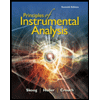 Principles of Instrumental AnalysisChemistryISBN:9781305577213Author:Douglas A. Skoog, F. James Holler, Stanley R. CrouchPublisher:Cengage Learning
Principles of Instrumental AnalysisChemistryISBN:9781305577213Author:Douglas A. Skoog, F. James Holler, Stanley R. CrouchPublisher:Cengage Learning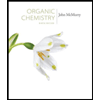
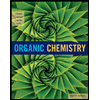 Organic ChemistryChemistryISBN:9781305580350Author:William H. Brown, Brent L. Iverson, Eric Anslyn, Christopher S. FootePublisher:Cengage Learning
Organic ChemistryChemistryISBN:9781305580350Author:William H. Brown, Brent L. Iverson, Eric Anslyn, Christopher S. FootePublisher:Cengage Learning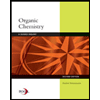 Organic Chemistry: A Guided InquiryChemistryISBN:9780618974122Author:Andrei StraumanisPublisher:Cengage Learning
Organic Chemistry: A Guided InquiryChemistryISBN:9780618974122Author:Andrei StraumanisPublisher:Cengage Learning



